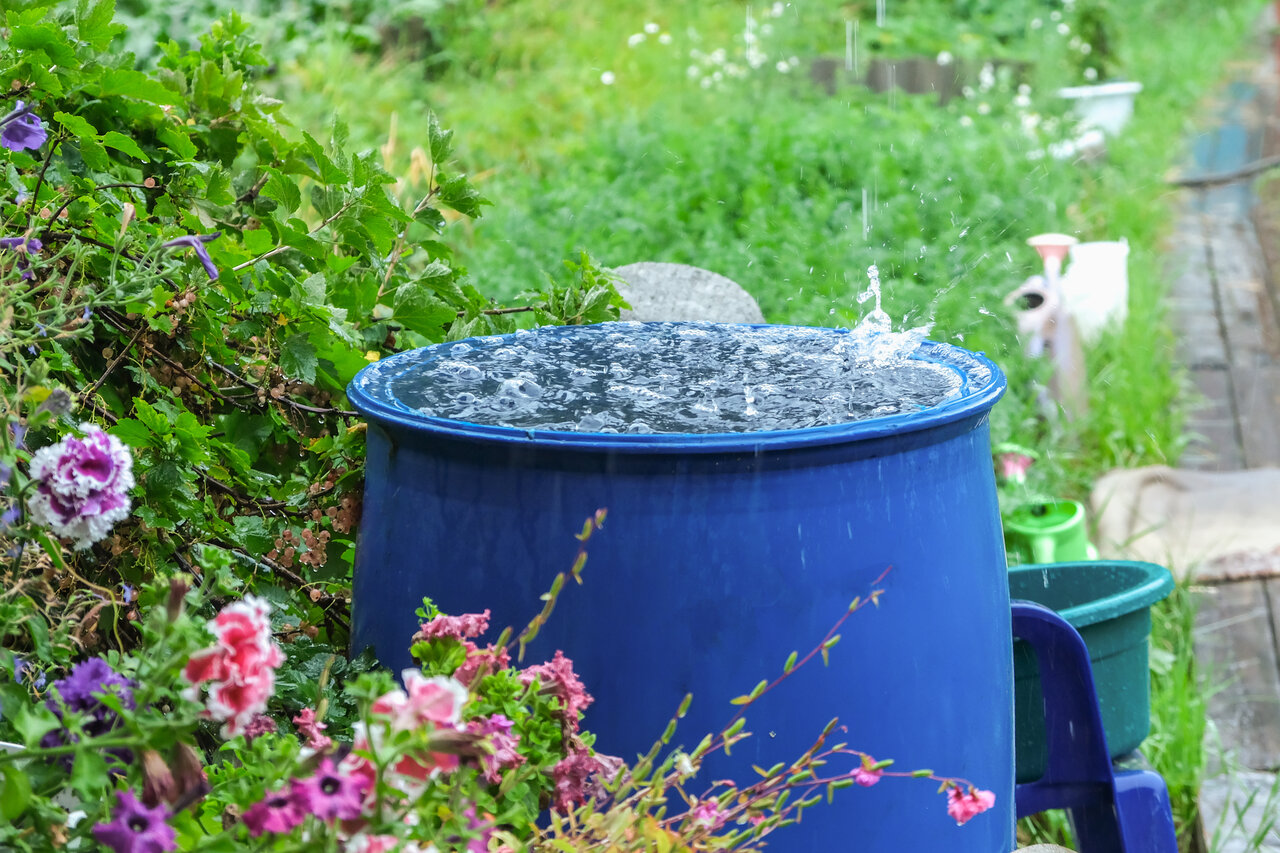Share This
Related Posts
Tags
Rainwater Harvesting
By Joel Nelson on Feb 16, 2024 in News
An age-old conservation practice is attracting renewed interest in this era of drought and unpredictable precipitation: rainwater harvesting, the process of capturing, diverting and storing rainwater for later use for residential use, landscaping, fire protection and other purposes.

Valued at $890 million in 2021, the global rainwater harvesting system market is projected to top $1.6 billion by 2030, with North America accounting for more than a third.
Rainwater harvesting today ranges from simple rain barrels to elaborate capture and storage systems complete with pumps, piping and filtration elements. In whatever way it’s practiced, rainwater harvesting is “one of the best examples of green building practices,” says business research firm Technavio.
“Complex installations are best left to professionals knowledgeable about restrictions and permit requirements, but if your goal is a free water source for lawn, garden and other activities, harvesting rainwater is fairly straightforward,” adds The Spruce, an online source for home decorating and repair.
A 2,000-square-foot roof can collect about 1,100 gallons of water from just one inch of rain. With the average American household using around 300 gallons per day, that inch could supply a household with water for almost four days.
The two principal types of rainwater collection are surface runoff, which funnels water from a flat surface into a storage container, and rooftop runoff, which involves positioning a barrel or other storage container beneath a building downspout. Harvesting components include gutters and other channeling conduits, filters that remove debris, water level monitors and pumps. Additional filtration and disinfection, along with any required local or state government permits, can product potable water.
While rain harvesting is most commonly used for residences, “the global non-residential rainwater harvesting systems market is expected to grow at a moderate rate due . . . the non-residential sector such as commercial and industry segments,” says Technavio.
Besides making water available for human use, harvesting keeps water that erodes soil and carries pollutants into streams and lakes off the ground. It also saves energy when used for outdoor applications that don’t require filtration or processing by water treatment plants. However, such systems can incur high initial costs along with significant maintenance costs if they aren’t installed properly or in the right place.
Rainwater harvesting might not be suitable for all property owners, but it’s worth considering. “With property planning and professional assistance, rainwater harvesting can be a great choice for your home. It not only saves you money but also protects the environment,” says Boerne, Texas-based Sustainable Homes Inc., a leading builder of fully sustainable homes.
More information on rainwater harvesting system options is available from a U.S. Federal Energy Management Program technology review.
